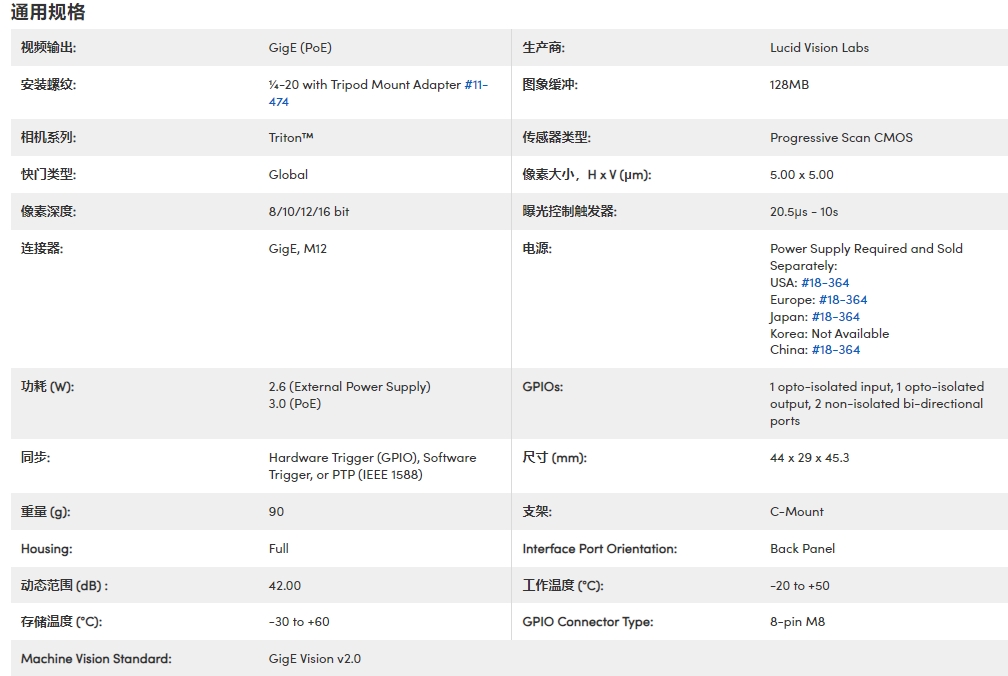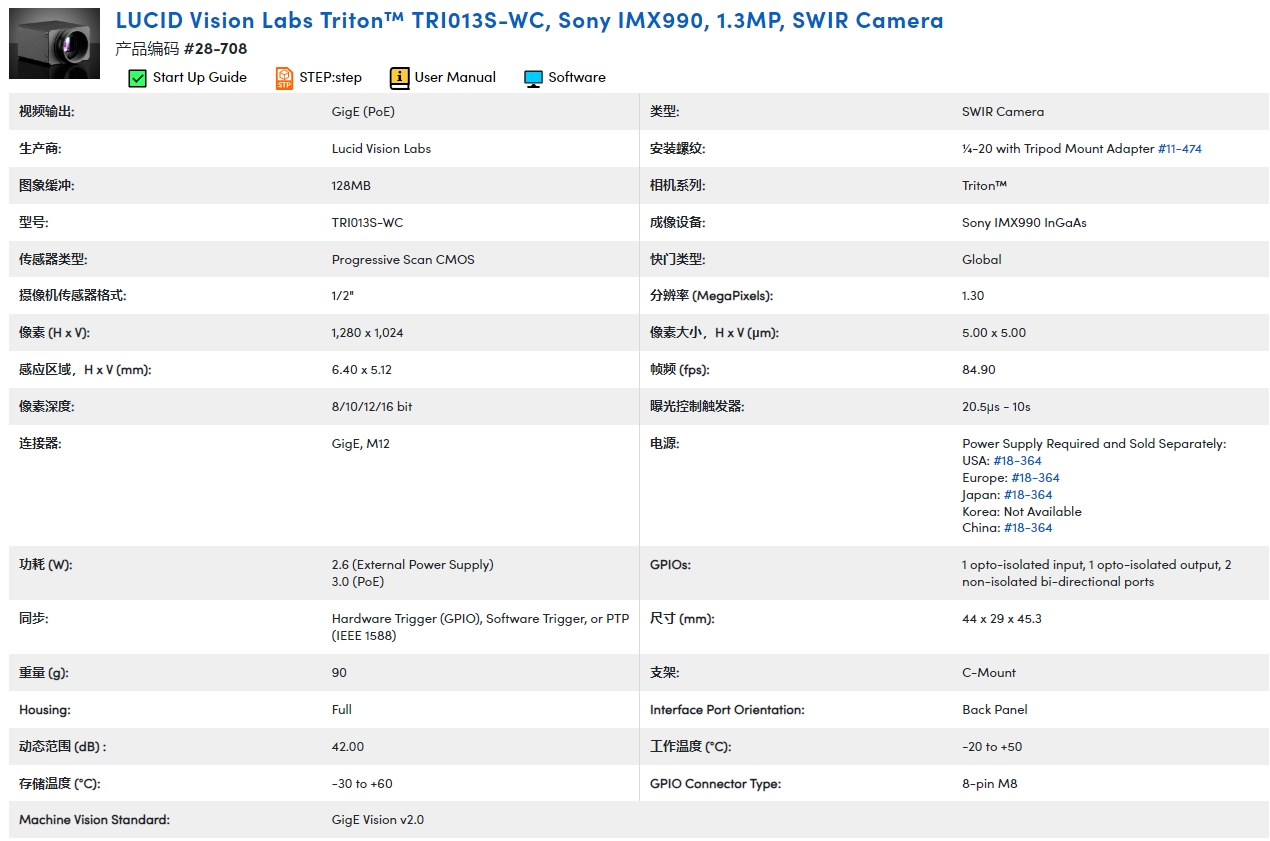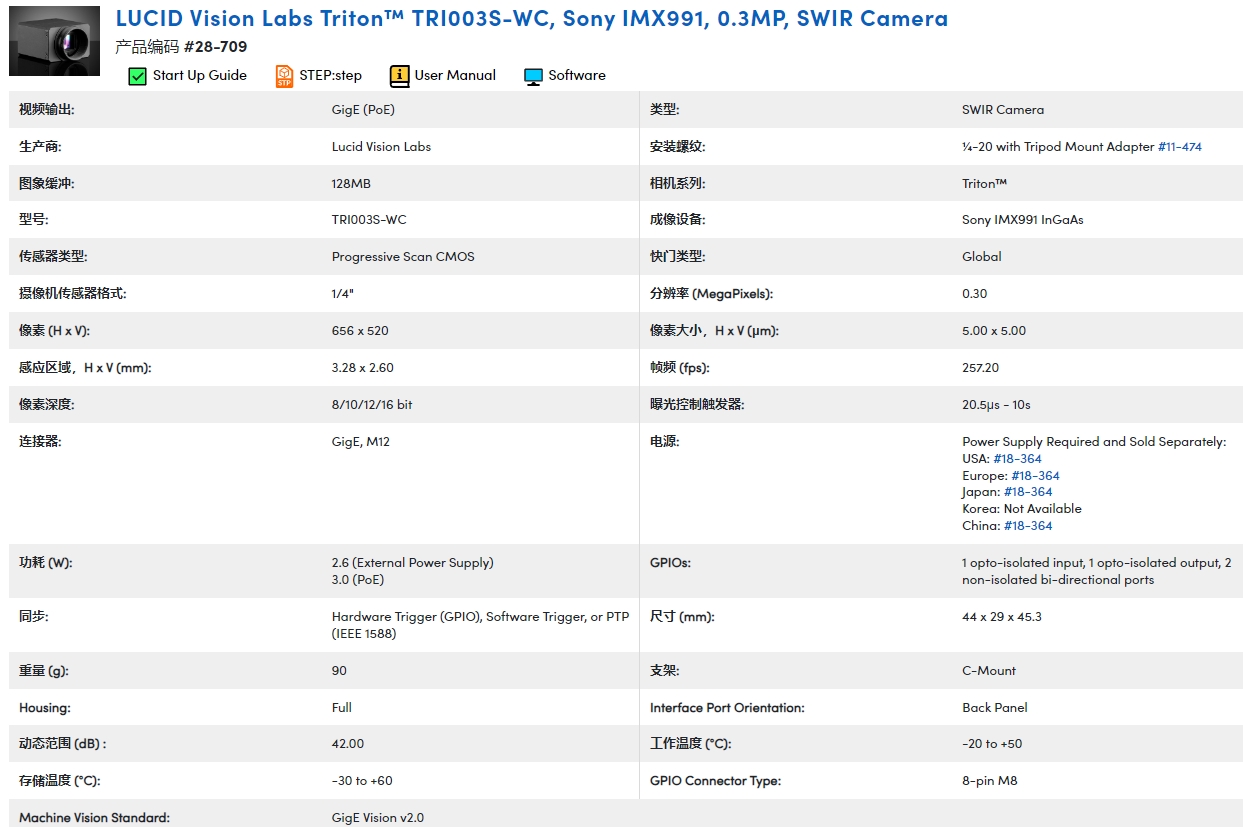
LUCID Vision Labs Triton™ GigE Power over Ethernet (PoE) SenSWIR™ Cameras are designed to provide high-resolution images across the visible, near-infrared (NIR), and shortwave infrared (SWIR) spectrum from 400 – 1750nm. Featuring an actively aligned image sensor, these cameras are designed to minimize sensor tilt and rotation and ensure alignment of the image sensor to the lens optical axis. For harsh environments with dust or water, accessory lens tubes are available to ensure an IP67 rating. LUCID Vision Labs Triton GigE Power over Ethernet (PoE) SenSWIR™ Cameras are ideal for applications including electronic board inspection, solar cell inspection, produce inspection, identifying and sorting, surveillance, and anti-counterfeiting. These cameras can be paired with TECHSPEC® C Series Fixed Focal Length SWIR Lenses, TECHSPEC® SilverTL™ SWIR Telecentric Lenses and Effilux SWIR LED Illuminators for optimal integration into SWIR systems.
SWIR is an acronym meaning Short Wavelength Infrared, also frequently referred to as shortwave infrared. SWIR generally refers to the wavelength band of light between 900nm and 2500nm.
Since standard silicon sensors have an upper limit of approximately 1000nm, SWIR imaging requires sensors and camera components capable of operation in the shortwave infrared range, which exceeds the upper limit of silicon. Indium gallium arsenide (InGaAs) sensors are commonly used in SWIR imaging, typically covering the 900nm to 1700nm range. But InGaAs devices are inherently expensive and face challenges in scaling to smaller pixel pitches and higher resolution arrays.
Unlike Long Wave Infrared (LWIR) light, which is emitted from the object itself, SWIR or shortwave infrared light is similar to visible light in that photons are reflected or absorbed by an object, providing the strong contrast needed for high-resolution imaging. While LWIR imagers give off more poorly defined thermal images, SWIR imagers deliver high-resolution images, much like visible light cameras.
SWIR imagers are used in a large number of applications including silicon inspection, laser beam profiling, hyperspectral imaging, chemical and plastics sensing, machine vision imaging, agricultural sensing, surveillance systems, and medical imaging. They are also intended for use in mobile phone facial recognition sensors, and autonomous vehicle imaging though obscured environments.


